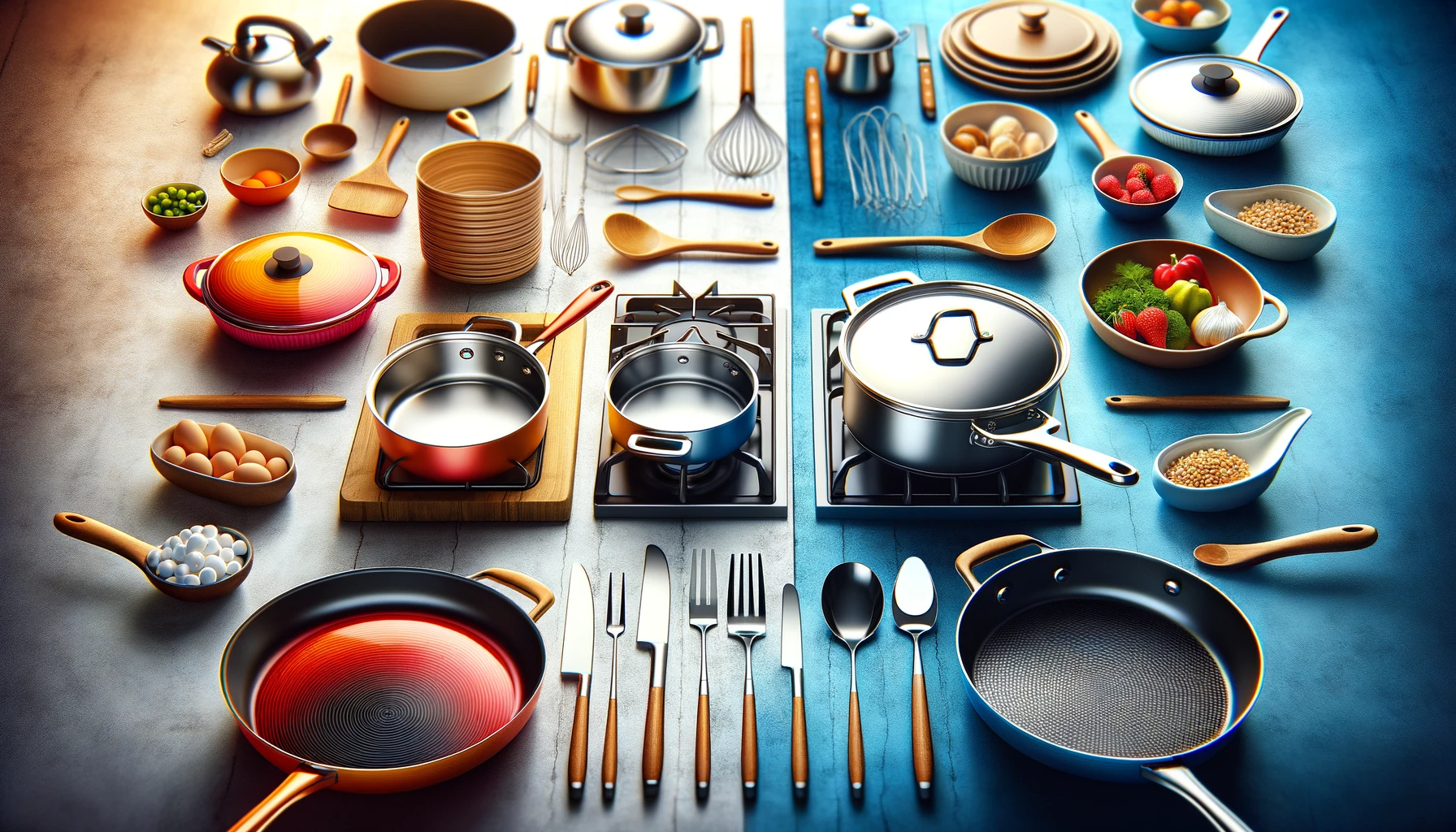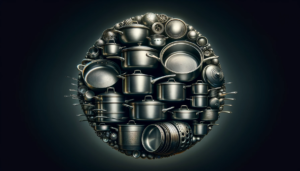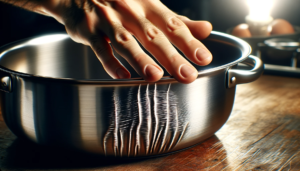With so many cookware options lining store shelves, choosing between ceramic and stainless steel pots and pans leaves many home cooks feeling overwhelmed.
By comparing critical factors like durability, cooking performance, ease of use and aesthetics, we can determine ideal uses cases for ceramic and stainless.
Let’s dive in to see how ceramic and stainless sets stack up…
Ceramic Cookware vs Stainless Steel Cookware
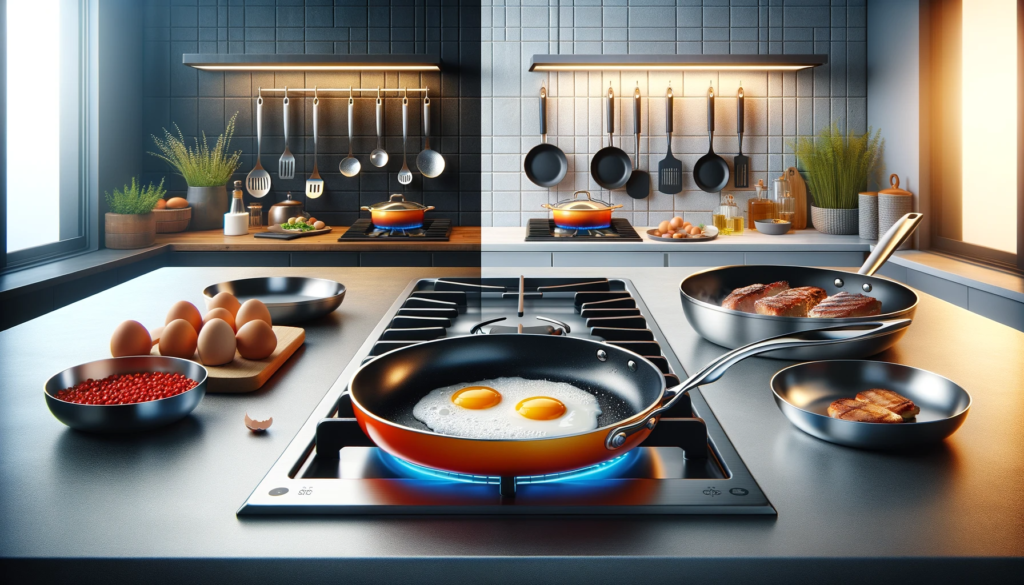
When deciding between ceramic and stainless steel cookware, ceramic generally provides better nonstick capabilities and easier cleaning, while stainless steel offers greater durability and often better heat conductivity.
Ceramic pots and pans have a nonstick coating that allows for easy food release and fast cleanup, but the coating can chip or scratch.
Stainless steel is extremely durable but requires more oil/butter to prevent sticking.
For most home cooks, a mix of ceramic nonstick and stainless steel cookware balances nonstick performance and longevity.
Ceramic excels for eggs and delicate foods, while stainless suits searing meats and stovetop-to-oven versatility.
Consider your cooking style and needs when choosing between the two.
Durability
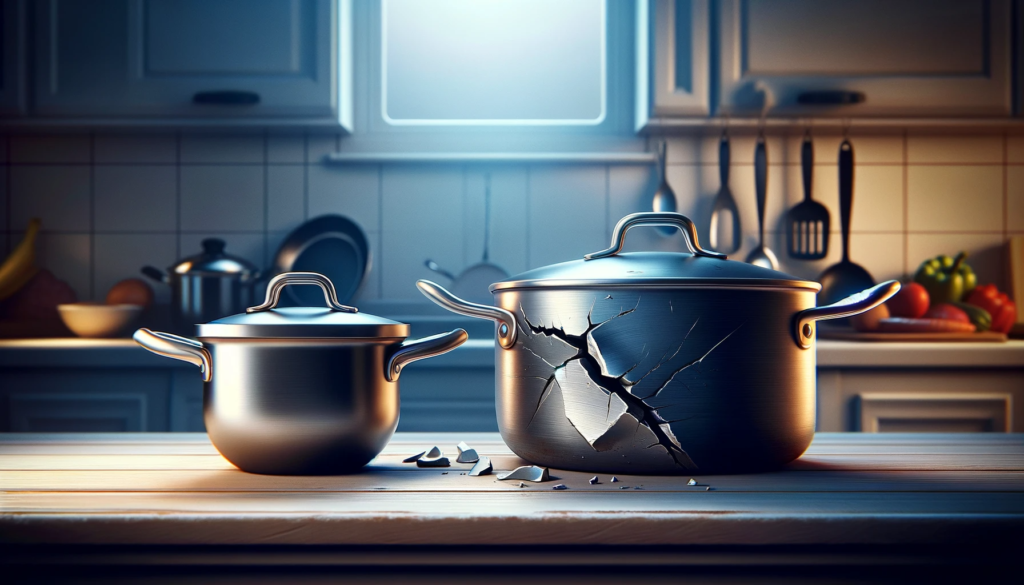
Ceramic cookware, while very useful, does tend to crack or chip more easily than stainless steel cookware.
If a ceramic pot or pan gets knocked off the stove or counter onto a hard floor, it is not unusual for it to crack or shatter.
The durability depends somewhat on the thickness and quality of the ceramic cookware, but it general ceramic is more prone to breaking than metal cookware.
By using care when handling ceramic pans and avoiding rapid temperature changes which could weaken the material over time, you can prolong the usable life of ceramic cookware.
But tiny hairline cracks could still develop through no fault of your own.
Stainless steel on the other hand is extremely durable and resilient in the kitchen.
Composed partially of chromium which lends corrosion resistance, high quality stainless steel can reliably last for 20-30 years or even longer.
This makes it a sound investment for cooking enthusiasts who spend lots of time in the kitchen.
As long as stainless steel pans are used properly and not overheated when empty, they can endure decades of daily usage across stovetop to oven cooking without issue.
Minor scratches or discoloration may occur, but will not affect performance.
Heat pans gradually and avoid extreme temperatures for longevity.
Newer ceramic coated stainless steel pans aim to marry the best attributes of both materials for cooking and durability.
The stainless steel base lends strength and resilience to withstand years of cooking trauma, while the ceramic nonstick surface allows for easy release of foods when cooking.
This makes for a pan with the potential to dependably withstand decades of use across varying heat settings and conditions, while also simplifying routine cooking tasks.
The ceramic layer can protect the underlying metal from reactive foods as well.
As with all nonstick cookware, avoid using harsh abrasive scrubbers or metal implements that could scratch the surface.
Heat Conductivity
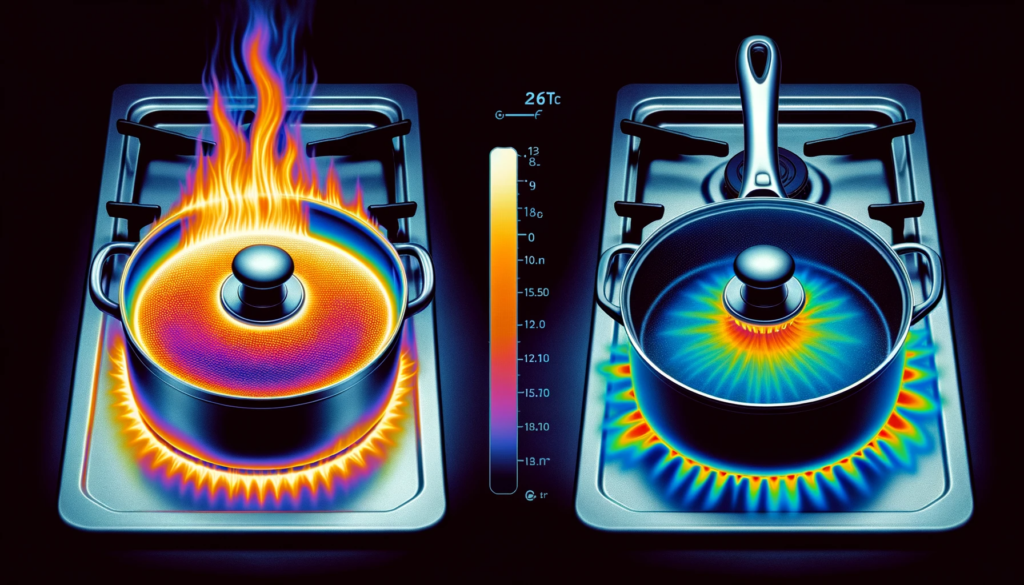
Stainless steel cookware is rightly praised for its ability to conduct heat quickly and evenly across pan surfaces.
The aluminum and/or copper cores used by higher quality stainless pans allow for very efficient heating so foods cook without cold or hot spots.
Ceramic materials conversely tend to heat up more slowly than metal cookware.
Well constructed stainless steel pans leverage those conductive aluminum or copper cores along the pan bottoms and sides to eliminate uneven cooking zones.
This means you can swiftly brown meat pieces or sauté aromatic veggies in hot oil without the need to constantly stir and rotate.
The excellent thermal conductivity of stainless steel also means pans can transition seamlessly between searing, simmering, or making pan sauces without losing equilibrium temperature.
Follow manufacturer maximum heat guidelines remain safe when cooking.
As non-metallic cookware, 100% ceramic pots and pans will heat up significantly slower than stainless steel.
Building up enough consistent heat energy across the entire ceramic pan surface to reach an ideal cooking temperature will require more patience as you preheat.
But ceramic excels once fully heated thanks to stable heat conductive molecules that continue vibrating energy across the cookware for slow even cooking.
For dishes like simmering tomato sauce all day or braising a pork roast, that reliable heat retention works to your distinct advantage.
Coating stainless steel pans with ceramic nonstick surfaces will lower the cookware’s responsiveness to temperature changes across the stove or oven setting range.
But the durable stainless steel base still allows coated pans to cook ingredients relatively rapidly especially compared to 100% ceramic options.
Finding the right balance between conductivity for searing while retaining nonstick tendencies for easy food release often produces very positive outcomes.
Weight In Use
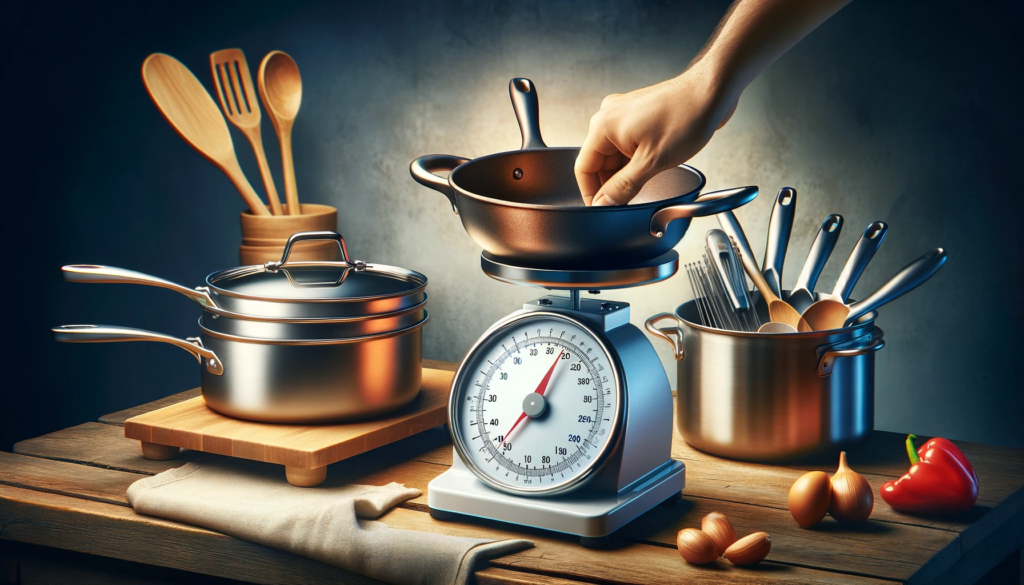
Ceramic cookware often weighs significantly less than stainless steel cookware which provides a lighter weight option for cooking tasks requiring maneuverability and motion like sautéing or stir-frying.
Stainless steel pans with their increased density will heat foods more evenly once settled into cooking thanks to additional thermal mass.
High end ceramic coated and uncoated pots and pans from trusted brands offer a major advantage in terms of lifting and moving them around the kitchen thanks to lightness.
Ceramic’s low density makes pans easier to hold and helps reduce wrist strain, especially important for cooks with arthritis or joint issues.
This same lightweight quality also facilitates motions like rolling foods or shaking a pan vigorously while sautéing or releasing sticky residue while cleaning.
While ceramic wins points for being lightweight and easier to handle, stainless steel’s heft actually proves advantageous in other cases.
More thermal conductivity means stainless steel pans won’t lose ambient oven or stovetop temperature rapidly when ingredients are added to start cooking.
This prevents ingredients from dropping down from the target temperature which could slow browning or searing.
The increased weight and density also lends stability when cooking atop the stove so there is less chance of accidental sliding or spilling.
So choose ceramic first when looking for cookware optimized for motions requiring agility or speed like stir-frying veggies or making omelets.
Then utilize heavy stainless steel for extended braising, searing dense roasts, or keeping sauces at an ideal simmer without temperature drops.
Thoughtfully made ceramic and stainless pans of any weight must sit flatly with tight fitting lids to work dependably.
Nonstick Properties

Thanks chiefly to advanced modern ceramic coatings, ceramic cookware clearly excels ahead of stainless steel options when it comes to nonstick properties and food release.
Quality ceramic delivers easy release for cleaning while stainless demands added fats and oils during cooking to prevent sticking issues.
Technical ceramic engineering innovations like Greblon ceramic and Thermolon ceramic now allow for exceptionally durable, high quality nonstick coatings safe for cooking.
The ultra smooth ceramic cooking surface lets home chefs use minimal amounts of added butter or oil during meal preps without the hassle of eggs, meats, or baked goods fusing to the pan.
That same slick quality also ensures quick clean ups by averting stubborn stuck on spots.
Standard stainless steel demands generous greasing with some form of butter, oil, or drippings to keep ingredients from clinging tightly when cooking is finished.
Without that lubricating layer between the metal pan and the food, stainless steel poses a frustrating risk of protein, sugars, and even veggies baked on into a stubborn crust requiring prolonged soaking or scrubbing using abrasives to remove.
Additionally, the greater need for frying oils directly opposes any goals around lower fat or lower calorie cooking.
Upgrading to ceramic coated stainless steel cookware presents the best possible outcome from both fronts.
Foods will not stick so harsh cleaning is averted, and calorie counts stay lower thanks to less oils needed while cooking.
Full stainless interiors can also optionally be polished to further increase slickness and release.
So coated stainless gets credit for quick heating in the stainless core along with easy release from quality modern nonstick ceramic.
Cleaning Demands
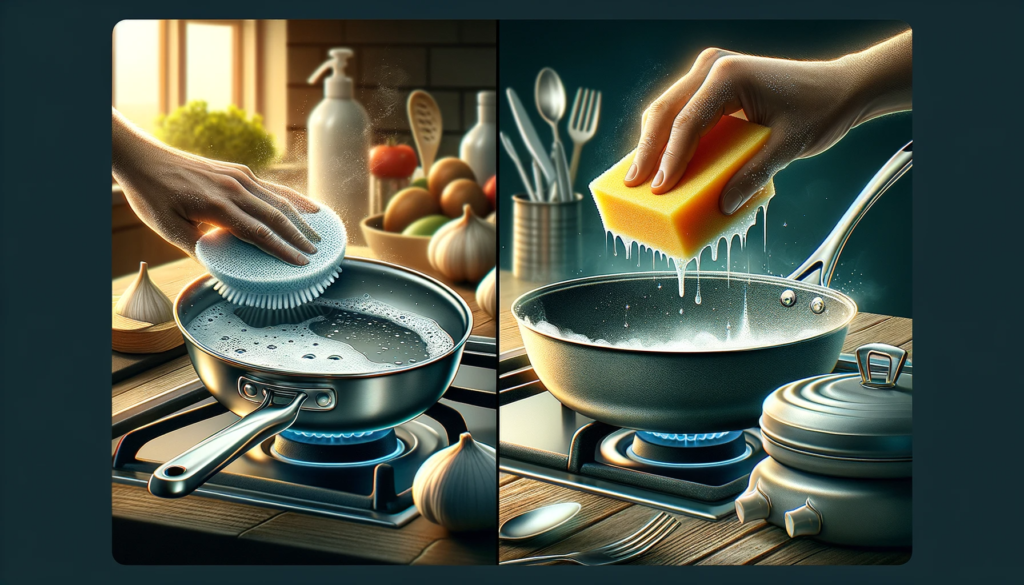
Ceramic nonstick cookware often cleans up very easily after use, requires little direct scrubbing, and remains gentle enough for routine dishwasher cleaning cycles.
Stainless steel conversely demands more hands on washing, light scrubbing, and absolutely cannot go untreated into a hot dishwasher due to stainless being prone to water spots.
Ceramic’s ultra slick cooking surface means even heavily baked on sauce residue or burnt cheese will wipe away cleanly with minimal elbow grease after a short soak.
And since quality ceramic coatings can withstand very high heat exposure without degrading or emitting odors, these pots and pans safely endure heated dishwasher cycles using standard detergents.
Repeated dishwashing won’t damage the durable nonstick ceramic surface.
The smooth scratch resistant stainless steel cooking surface gleams spectacularly brand new, but requires gentle hand washing, a soft dish sponge, and thorough drying immediately to maintain flawless metal appeal after usage.
Eggs, starches, and milk residue may obstinately cling after cooking due to stainless steel’s low natural nonstick ability.
Rubbing too aggressively risks etching or scratching the protective exterior leading to oxidation issues over time even on premium brands.
Just as critically, prolonged contact with water droplets on stainless steel leaves visible mineral staining marring the exterior.
The ease of post cooking residue wiping away cleanly from ceramic rather than needing 20 minutes of stooped scrubbing at the sink makes a substantial difference when faced with cookware cleanup after elaborate dinner parties.
Stainless requires care and effort but looks gorgeous.
Modern nonstick ceramic saves energy and lets the cook relax sooner after meals.
Reactivity Concerns
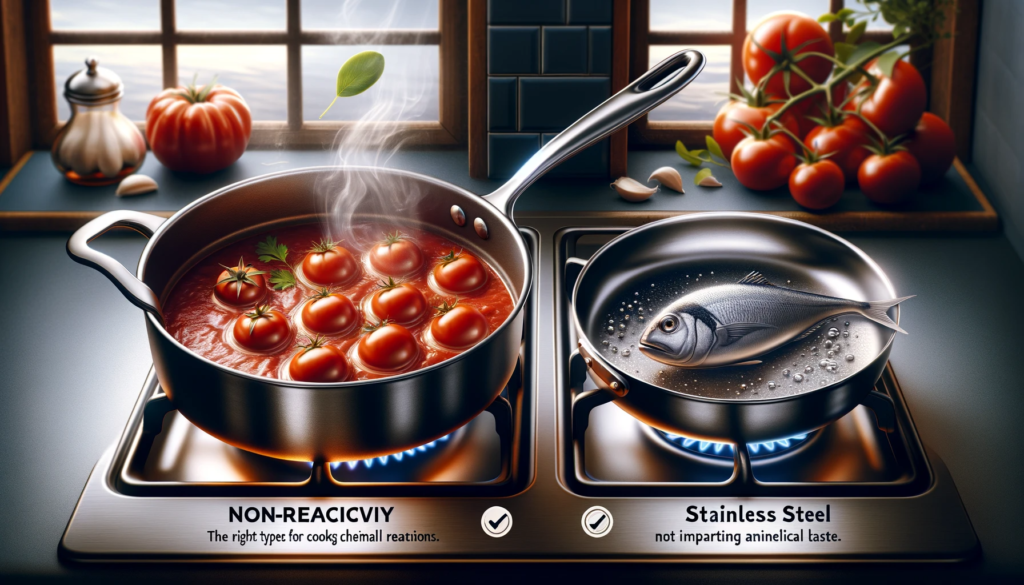
Being an inorganic ceramic material as opposed to metallic, ceramic pots and pans offer negligible risks of chemical reactions with foods leading to better flavor preservation over some stainless steel variants.
High nickel stainless steel also rates as largely nonreactive, but lower nickel content stainless risks leaching trace metals when exposed to acidic foods.
Hardened inorganic ceramic lacks microscopic pores and cannot actively transfer material particles at typical cooking temperatures.
So sauce flavors, soup stocks, and braising liquids won’t lose potency even after reducing for hours.
And since quality ceramic doesn’t breakdown or ionize from heat or pH changes, there are no metallic molecules to migrate into foods altering tastes or textures unexpectedly.
Well engineered ceramics stay stable meaning neutral flavors.
Surgical grade and laboratory stainless steel earns nonreactive status since percentages of nickel and chromium exceed cutlery grade alloys imparting corrosion protection.
When used properly, upscale stainless won’t leave steaks or shrimp tasting metallic or otherwise impart off flavors detrimental to enjoying the meal.
However, highly acidic broths, sautéed tomato sauces, wine-heavy pan reductions, or vinegar-forward poaching liquids still risk drawing out trace iron, chromium or nickel from low grade stainless steel over extended exposure times.
So choose uncoated stainless steel cookware made exclusively using alloys clearly labeled 304, 316, or higher specification grades for optimal outcomes mixing acidic preparations.
Or opt for ceramic coatings which supply an added layer of protection against acidic degradation reactions on lower nickel steels.
Ceramic excels based on inert qualities compared to metals.
Value Comparison
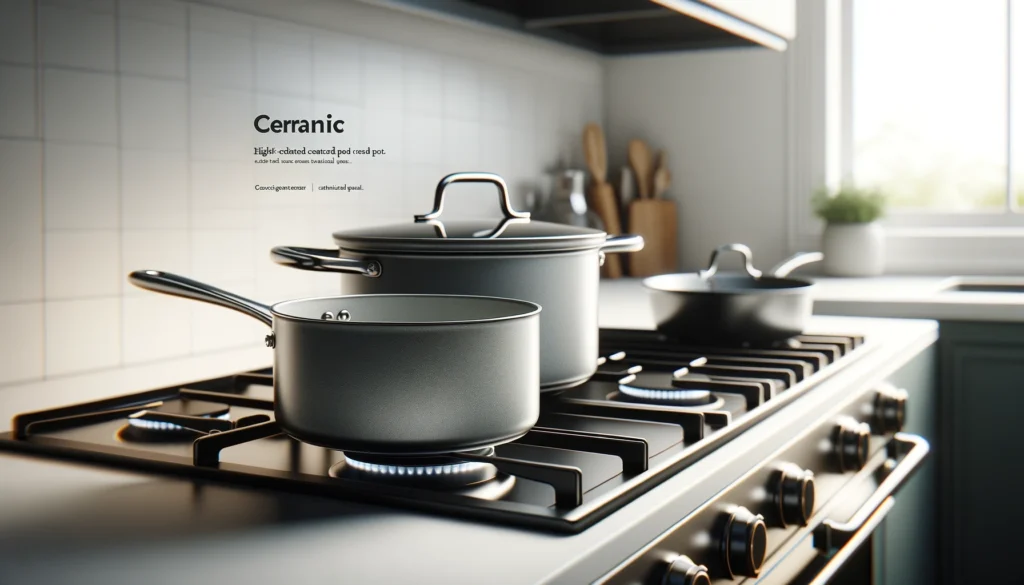
Taking into consideration materials, technology, and labor, quality ceramic coated and uncoated pots and pans often reflect noticeably higher prices initially over basic stainless steel pans.
However, cheaper low grade stainless steel cookware unlikely to survive more than a few years leans inexpensive by comparison.
Over decades of frequent dependable use, durable high quality ceramic likely saves money over having to replace lower priced stainless items repeatedly when they degrade.
Pure ceramic cookware involves substantial upfront investments of technical expertise, specialized production machinery, extensive quality control, and advanced materials surcharges.
Although costly, improved modern nonstick formulas and attractive designs still make ceramic cookware worth the price given glowing peer reviews validating extended nonstick performance over decades with proper care compared to stainless options.
Mass manufacturing processes including stamping and welding keep low grade stainless steel pots and pans with inferior nickel content very affordable.
Especially prevalent online are direct to consumer cookware sets using basic stainless alloys that, while unable to survive regular usage for more than a few years, allow budget focused home cooks to temporarily enjoy stainless steel’s conductivity benefits often backed by satisfaction guarantees.
However the regular disposal and replacement of these items over time has negative environmental impacts overall.
Consider useful lifespan not just sale price when investing in quality cookware.
Ceramic sets exceeding five years of frequent use likely justify the expense compared to replacing budget stainless annually.
Where possible use recyclable stainless grades.
Appealing Aesthetics
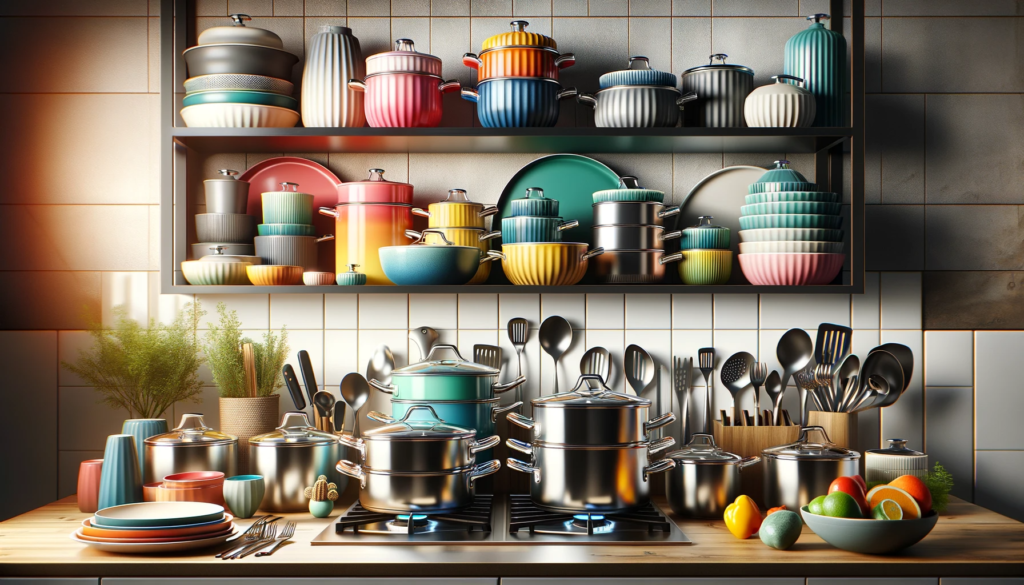
Thanks to vibrant colors and sleek silhouettes, ceramic coated and uncoated cookware offers exciting choices to accent any kitchen décor compared to the monochromatic brushed steel appearance of most stainless sets.
Stainless does allow quality materials to shine through.
Innovative ceramic coatings like Greblon allow exterior pan colors spanning burnt orange, deep red, rich blue, bright white, gleaming gold and more while smooth black ceramic blends into any modern decor.
Combined with classic stainless steel handles and bases these colors help visually distinguish pans by size or everyday use intention.
Such differentiation assists hurried cooks in grabbing the ideal pan by sight rather than reading labels when recipes demand specific sizes.
For those preferring neutral tones, matte and high gloss black ceramic exteriors impress as well.
Uncoated stainless steel limiting owners mainly to functional silver, gunmetal and occasionally black exterior finishes seems boring to some cookware purchasers.
However, thoughtfully designed stainless sets allow the beautiful gleaming brushed metal to stand out through hefty ergonomic handles, matching covers, and transparent tempered glass lids.
High grade stainless steel will never peel or require repainting either.
The striking contrast between pristine polished metal set against black handles and accents can pop pleasingly in both traditional and modern kitchen decors.
Personal style matters greatly too when designing a cooking space! Fans of clinical environments may insist upon uniform stainless finishes across appliances and cookware to achieve cohesion.
For those who adore flavors from global cuisines and market spices, a vibrant red ceramic coated wok and curry pot evoke cooking passion.
Either ceramic or stainless will function reliably so emphasize the aesthetic sparking happiness!
Conclusion
Both ceramic and stainless steel cookware have advantages that suit different cooking tasks and styles.
For most home cooks, a combination of ceramic nonstick and durable stainless sets allows enjoying the benefits of both while minimizing downsides.
Carefully consider your needs and kitchen habits before investing to get the best-suited pots and pans.
